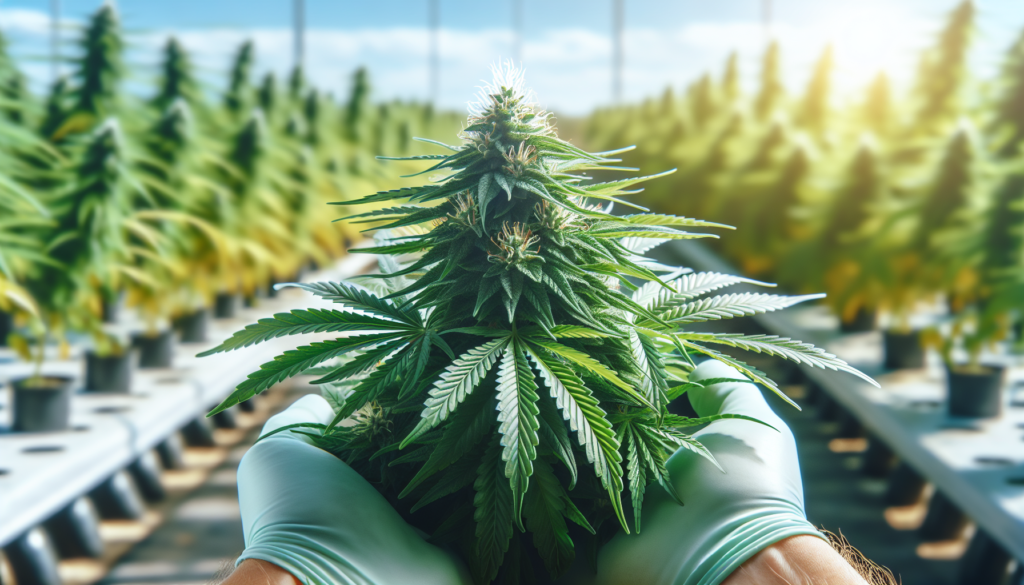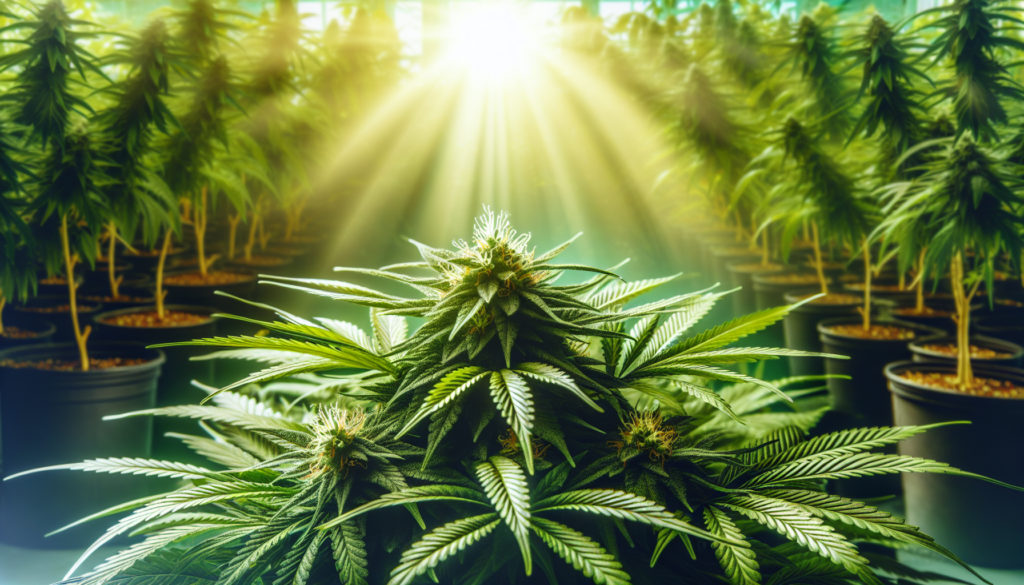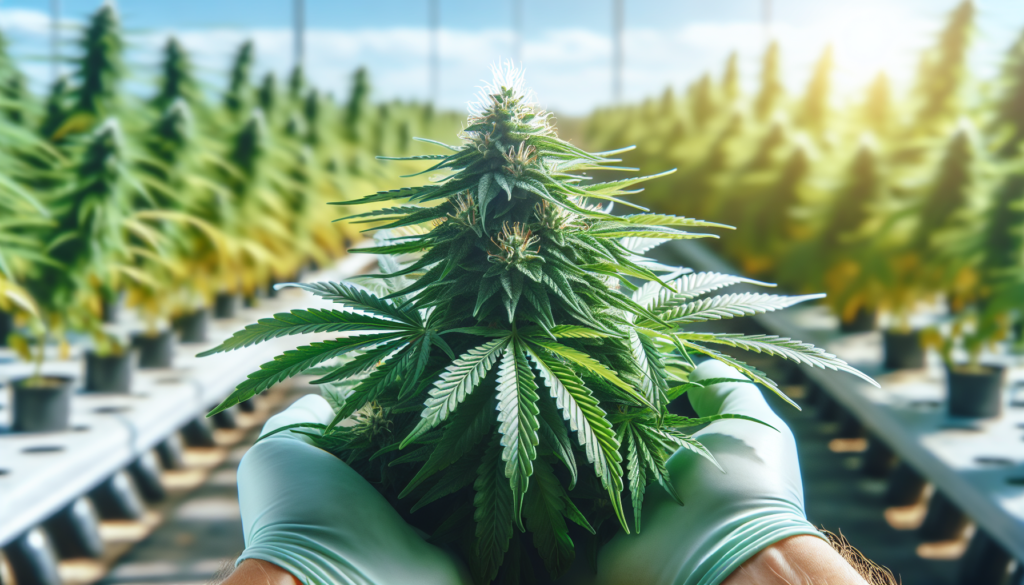How To Grow Cannabis

How To Grow Cannabis Embarking on the journey of growing cannabis can be as thrilling as it is intricate, with a promise of bountiful harvests if you navigate the course with a bit of know-how. Envision turning a mere seed into a lush canopy of green, laden with the potent, aromatic buds you’ve always admired. This article is your friend in the garden, offering guidance on everything from selecting the right strain to ensuring your plants get the tender loving care they need to thrive. Whether you’re a green thumb in the making or a seasoned grower seeking new tips, your path to cultivating cannabis begins here.
Understanding Cannabis And Its Needs
Cannabis, often known for its recreational and medicinal uses, is a plant that thrives under certain conditions which you’ll need to understand if you plan to grow it successfully. Here’s what you’ll need to keep in mind.
Cannabis Plant Basics
As you get started, it’s crucial to know that cannabis is a photoperiodic plant, meaning it relies on specific light cycles to transition from the vegetative stage to the flowering stage. Its life cycle can be split into several stages: germination, seedling, vegetative, and flowering. Throughout these stages, your plant will demand attention to its environment to flourish properly.
Light Requirements
Your cannabis plants will need plenty of light, especially during the vegetative stage when they’re building up their size. If you’re growing indoors, you will need to simulate the sun’s intensity with grow lights. The flowering stage requires a shift in light exposure to a 12-hours-on, 12-hours-off pattern to encourage budding. For outdoor growers, nature takes care of the light, but you must plan your grow season around your local daylight hours.
Watering Schedules
Watering your plants isn’t as simple as dousing them whenever you remember. Overwatering can be just as harmful as underwatering, leading to issues like root rot. Cannabis prefers a watering schedule that allows the soil to dry out slightly between waterings. The exact frequency will depend on factors like the size of your plants, their growth stage, and the environment.
Nutrient Needs
Cannabis is a hungry plant, especially in terms of nitrogen, phosphorus, and potassium—your primary macronutrients. However, it also needs a variety of micronutrients like calcium and magnesium. These needs vary as the plant progresses through its lifecycle, with a generally higher nitrogen demand during the vegetative stage and increased phosphorus and potassium during flowering.
Temperature and Humidity Control
Maintaining proper temperature and humidity is vital for avoiding mold or stress. Younger plants can handle higher humidity levels, while flowering plants prefer lower humidity to prevent bud rot. The ideal temperature for most cannabis plants is between 70-85°F (21-29°C) during the day and slightly cooler at night.
Legal Considerations Of Growing Cannabis
Before you start popping seeds or cutting clones, you need to get familiar with the law. Cultivating cannabis might be legal where you live, but there are typically a few caveats.
Federal, State, and Local Regulations
In some countries, like the United States, cannabis may be legal in certain states but still illegal under federal law. You’ll need to make sure you understand both state and local regulations, as these can impose limits on how you grow, how much you can grow, and whether you can grow at all.
Understanding Limits on Cultivation
Many regions that allow the cultivation of cannabis for personal use have strict limits on the number of plants you can grow. This could range from one or two plants to a small handful. Penalties for exceeding these limits can be severe, so be sure to understand and adhere to them.
Navigating Legal Risks
Even if you’re following all the rules, growing cannabis can still come with legal risks like theft or resale. Make sure you’re taking precautions to minimize these risks, like not advertising the fact that you’re growing cannabis and ensuring you’re not distributing your product unless it’s completely legal to do so.
Privacy and Security Concerns
Protecting your grow area is not just about keeping your plants safe from thieves; it’s also about ensuring you’re not inadvertently breaking the law by, say, allowing the smell of cannabis to bother neighbors or having your plants visible from public spaces.

Choosing Your Grow Space
Whether you’re planning an indoor micro-grow or a full outdoor garden, your space will dictate much about how you proceed.
Indoor vs. Outdoor Growing
The biggest decision you’ll need to make is whether to grow your plants indoors or outside. Indoor grows offer more control over the environment but can be more expensive and labor-intensive. Outdoor grows are at the mercy of the weather and pests but can be cheaper and often produce larger yields due to the power of the sun.
Space Requirements
Your grow space needs to be big enough to accommodate your plants as they grow but secure enough to keep out unwanted visitors (including pets and pests). Indoors, you have to think about height, especially once those lights are hung up. Outdoors, you’ll need to consider the spacing between plants and their access to direct sunlight.
Controlling the Environment Indoors
Indoor growers have to create an ideal growing environment from scratch. That means managing lights, ventilation, temperature, and humidity. Each one of these factors can be dialed in with the right equipment and diligent monitoring.
Preparing Outdoor Soil
For outdoor growers, soil quality is paramount. You may be lucky enough to have fertile ground naturally, but more often than not, you’ll need to enhance or replace the soil you have. Good drainage, pH balance, and nutrient content are all factors that will contribute to robust plant growth.
Selecting Cannabis Strains
Choosing the right strain is a huge part of enjoying your grow. Different strains have different needs and produce different effects.
Indica vs. Sativa vs. Hybrid
Indicas are known for their relaxant properties and typically grow shorter and bushier. Sativas, on the other hand, usually offer more energizing effects and grow taller with more spacing between the leaves. Hybrids can exhibit traits from both categories and can be bred to meet specific desires and needs.
Considering Climate and Grow Space
Your climate and grow space can significantly influence which strains you should choose. Some strains, for example, might deal well with the high humidity of a coastal climate, while others might need the drier conditions found inland.
Yield Potential
How much do you want to harvest? Some strains are known for their generous yields, while others may produce less but compensate with higher potency.
Potency and Terpene Profiles
Speaking of potency, THC and CBD levels vary by strain, as do the terpenes that give cannabis its flavor and scent. Decide what’s important to you—whether it’s a high-THC content for strong effects or a rich terpene profile for flavor and aroma—and choose accordingly.

Acquiring Quality Seeds or Clones
Starting off with good genetics can make or break your grow, so here’s how to ensure you’re on the right track.
Where to Buy Seeds
Make sure you’re purchasing seeds from a reputable source. Whether that’s a well-reviewed online seed bank or a trusted local dispensary, starting with quality seeds is a vital first step.
Understanding Seed Genetics
Do some research on the genetics of the seeds you’re considering. Look for stability and a track record of success; with seeds, predictability is a good thing.
Choosing Between Seeds and Clones
Do you start with seeds or clones? Seeds mean you’re starting from scratch with the potential for stronger plants, but they can be less predictable. Clones are cuttings from established plants, providing a more predictable outcome but with their own challenges, such as the risk of inheriting any diseases or pests from the mother plant.
Ensuring Quality and Viability
Whether you go for seeds or clones, look for signs of good health. With seeds, you want them to be mature, which is indicated by a dark, hard shell. Clones should have vibrant color and no signs of pests or disease.
The Cannabis Growth Cycle
Understanding the cannabis growth cycle is essential for timing your care and interventions.
Germination
Here’s where it all begins. Germination is the process of getting your seeds to sprout. This usually involves some combination of moisture, heat, and darkness to coax the life out of them. This stage typically takes a few days.
Seedling Phase
Once your seeds have sprouted, they’ll enter the seedling phase. This is a delicate time where your young plants will need plenty of light but not as much water or nutrients as grown plants. The seedling phase can last anywhere from one to three weeks.
Vegetative Phase
During the vegetative phase, your plants are all about growth. This is when you’ll do most of your training and shaping of your plants. They’ll need plenty of nitrogen-rich nutrients and lots of light—at least 18 hours a day—if you’re growing indoors.
Flowering Phase
Triggered by changes in light exposure, the flowering phase is when your plants start producing the buds you’re after. This is when feeding changes and your monitoring for pests and diseases should be at its peak.
Harvesting Time
After several weeks to months, depending on the strain, it’s finally time to harvest. This involves cutting down your plants, trimming the buds, and then drying and curing them for use. Timing is important; too early and your buds won’t be potent, too late and they could degrade.
Setting Up Your Grow System
The details of your grow system can have a big impact on the success of your crop.
Hydroponics vs. Soil
The choice between hydroponics and soil can be a big one. Hydroponics can make for quicker growth and higher yields, but it also requires constant monitoring and adjustment of nutrient solutions. Soil is more forgiving and can provide a more complex flavor profile due to the range of nutrients the roots absorb.
Lighting Systems
Indoor grows depend heavily on the quality of their lighting systems. Options range from high-intensity discharge (HID) lights like HPS and MH, to more energy-efficient LEDs or fluorescents. Each has its advantages and ideal applications.
Ventilation and Air Circulation
Proper ventilation and air circulation prevent a host of problems, from mold to weak stems. Fresh air exchange and strategic fan placement can save you a lot of trouble down the line.
Watering and Irrigation Systems
From hand-watering to drip systems, how you deliver water to your plants matters. The goal is to provide enough moisture without causing stress or encouraging disease.
Nutrients and Fertilizers
Nutrition is vital, and you’ve got to get it right if you want your plants to produce those big, sticky buds.
Macronutrients and Micronutrients
Understanding the balance of macronutrients (N-P-K) and micronutrients (like calcium and magnesium) is essential. Each stage of growth calls for different ratios, and getting it wrong can lead to poor growth or even plant death.
Organic vs. Synthetic Nutrients
The choice between organic and synthetic nutrients can come down to personal preference, but there are differences. Organic nutrients can improve the flavor of your buds and are often considered more environmentally friendly, but they can be less precise. Synthetic nutrients offer that precision but at the cost of harsher chemical inputs which may not be suitable if you’re aiming for an organic grow.
Feeding Schedules
Stick to a feeding schedule to ensure your plants get the right nutrients at the right times. Improper feeding can lead to nutrient lockout or burn, both of which are difficult to recover from.
Recognizing Nutrient Deficiencies
Learn to recognize the signs of nutrient deficiencies—yellowing leaves, purple stems, etc.—so you can correct issues before they compromise your crop.
Monitoring Plant Health
As with any form of gardening, vigilance is key to keeping your cannabis plants happy and healthy.
Identifying Pests
Keep an eye out for common cannabis pests, such as spider mites, aphids, and whiteflies. Catching them early is key to controlling them before they become a big problem.
Preventing Diseases
Fungal and bacterial diseases can quickly ruin your crop. Proper spacing and environmental controls can prevent issues like powdery mildew or root rot.
Routine Inspection Practices
Make a habit of regularly inspecting your plants from top to bottom. Look for discolorations, spots, or anything out of the ordinary so you can react fast.
Organic Pest and Disease Control
If you do encounter pests or disease, organic control options like neem oil, beneficial insects, or baking soda solutions can be effective without the use of harsh chemicals.
Engaging With The Cannabis Community
Growing cannabis can be a solitary hobby, but there’s a whole community out there to support you.
Forums and Social Media Groups
Online forums and social media groups can be invaluable resources. They’re places to ask questions, share success stories, and get advice from more experienced growers.
Local Grow Classes and Workshops
Sometimes, there’s no substitute for in-person learning. Locally held classes and workshops can give you hands-on experience and direct access to expert knowledge.
Cannabis Industry Events
From trade shows to cannabis cups, industry events not only let you see what’s at the cutting edge but also offer networking opportunities with fellow enthusiasts.
Staying Informed About Trends
Cannabis cultivation is a rapidly evolving field. Staying abreast of the latest techniques, products, and scientific findings can keep you at the top of your grow game. Whether it’s adopting new nutrient regimens or experimenting with cutting-edge lighting tech, there’s always something new to learn in cannabis cultivation.
Cannabis Cultivation Home Gardening Horticulture Indoor Farming Plant Care





